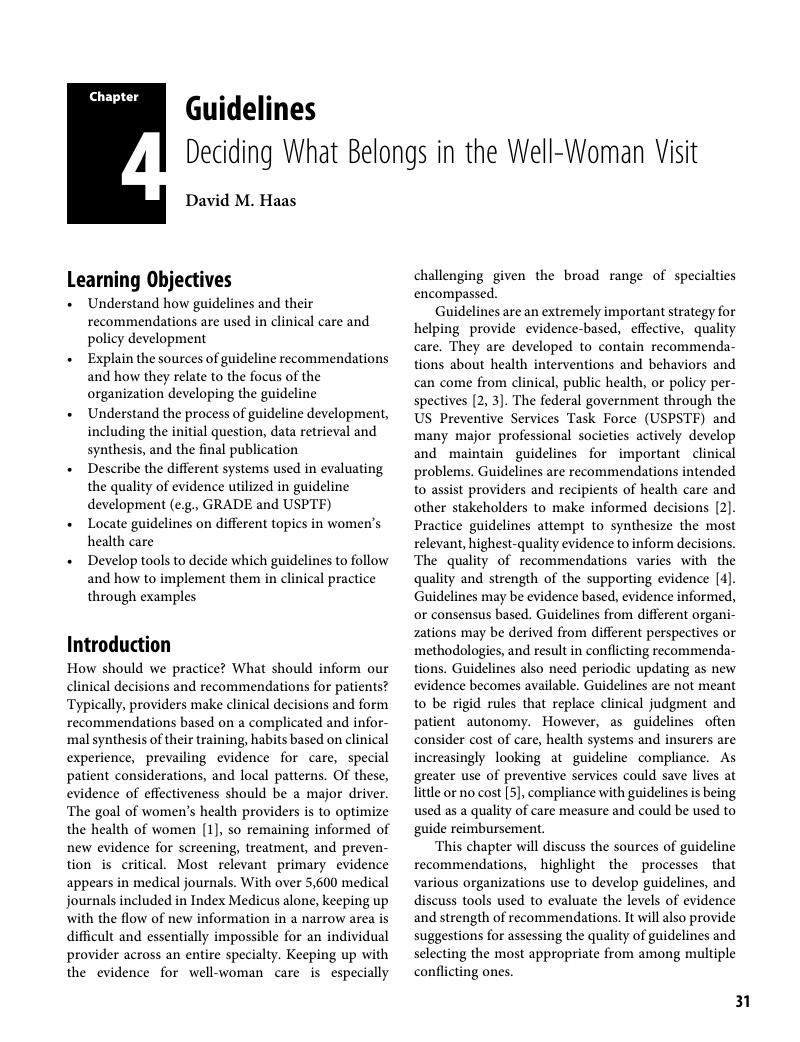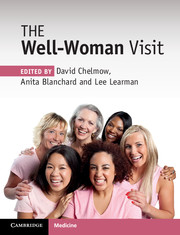Book contents
- The Well-Woman Visit
- The Well-Woman Visit
- Copyright page
- Contents
- Contributors
- Introduction
- Section 1 General Principles
- Chapter 1 The Well-Woman Task Force
- Chapter 2 Rationale for the Well-Woman Visit
- Chapter 3 Principles of Early Diagnosis and Prevention
- Chapter 4 Guidelines
- Chapter 5 Promoting Lifestyle Modification and Behavior Change in the Context of Shared Decision-Making
- Chapter 6 Practical Aspects of the Well-Woman Visit
- Chapter 7 Considerations for Medically Underserved Populations
- Chapter 8 Paying for the Well-Woman Visit
- Section 2 Components of the Well-Woman Visit
- Index
- References
Chapter 4 - Guidelines
Deciding What Belongs in the Well-Woman Visit
from Section 1 - General Principles
Published online by Cambridge University Press: 22 June 2017
- The Well-Woman Visit
- The Well-Woman Visit
- Copyright page
- Contents
- Contributors
- Introduction
- Section 1 General Principles
- Chapter 1 The Well-Woman Task Force
- Chapter 2 Rationale for the Well-Woman Visit
- Chapter 3 Principles of Early Diagnosis and Prevention
- Chapter 4 Guidelines
- Chapter 5 Promoting Lifestyle Modification and Behavior Change in the Context of Shared Decision-Making
- Chapter 6 Practical Aspects of the Well-Woman Visit
- Chapter 7 Considerations for Medically Underserved Populations
- Chapter 8 Paying for the Well-Woman Visit
- Section 2 Components of the Well-Woman Visit
- Index
- References
Summary

- Type
- Chapter
- Information
- The Well-Woman Visit , pp. 31 - 40Publisher: Cambridge University PressPrint publication year: 2017

